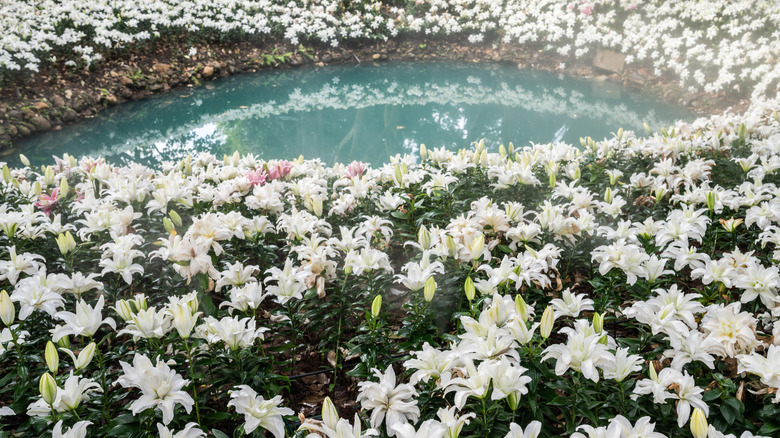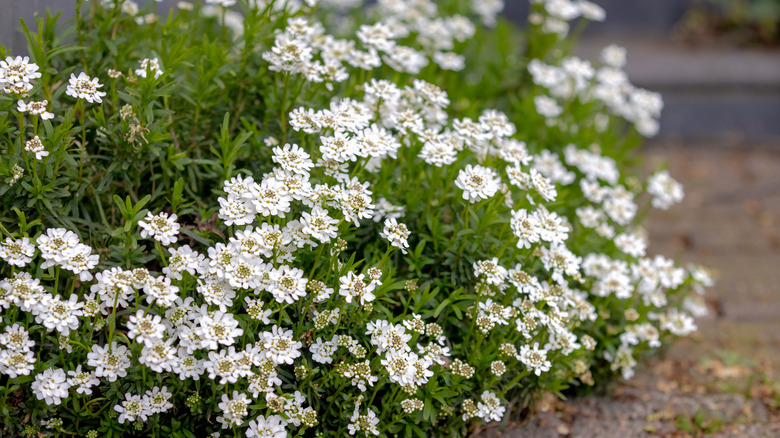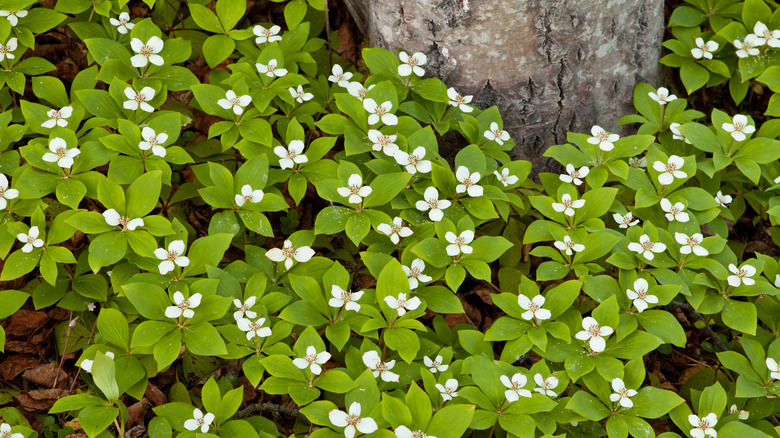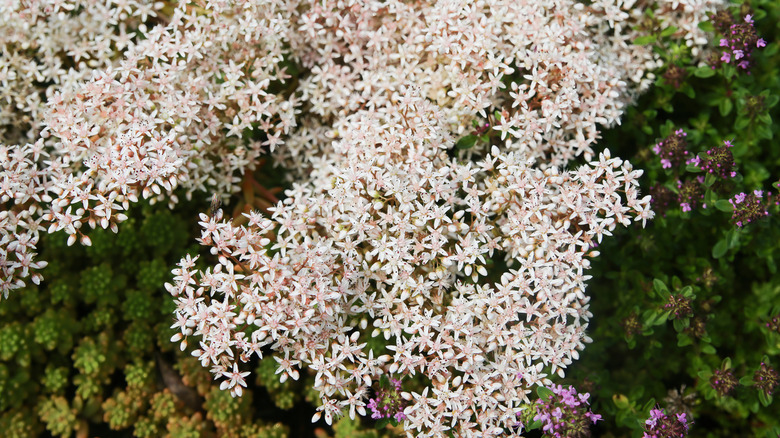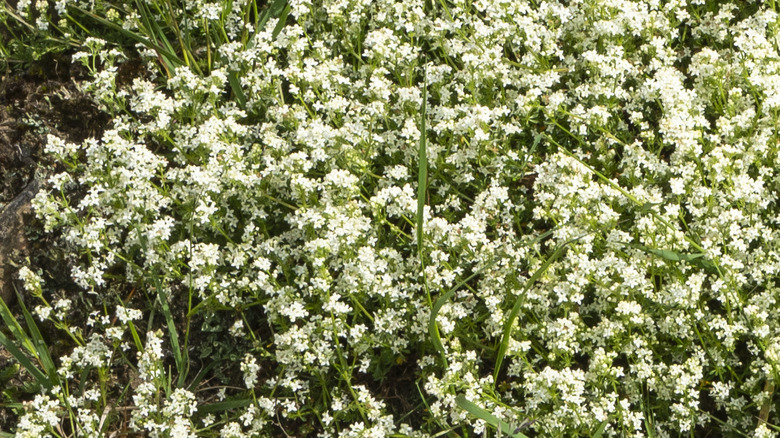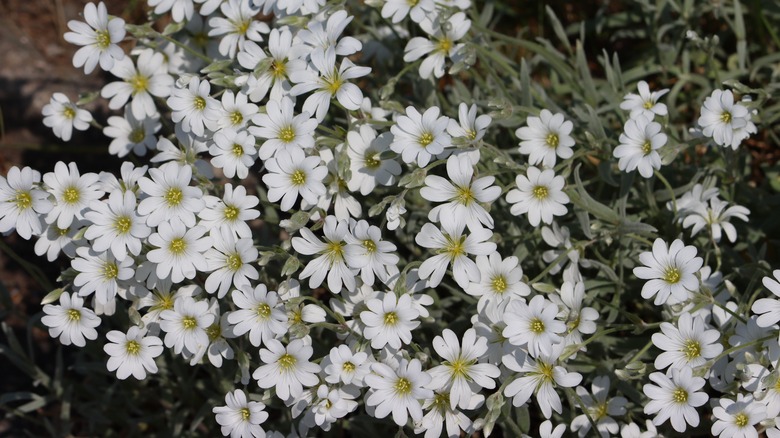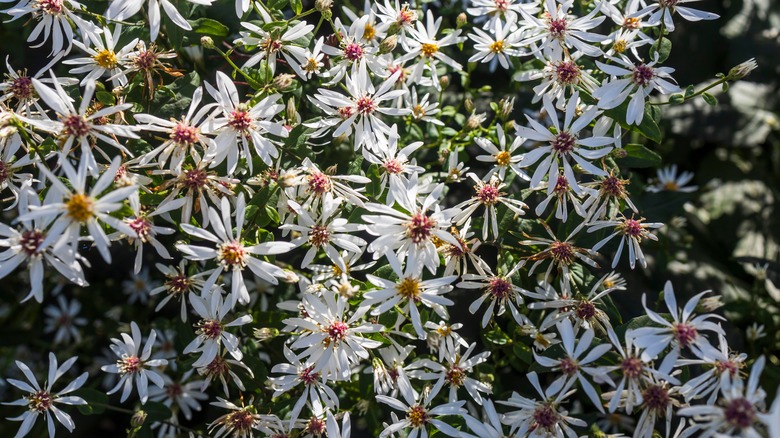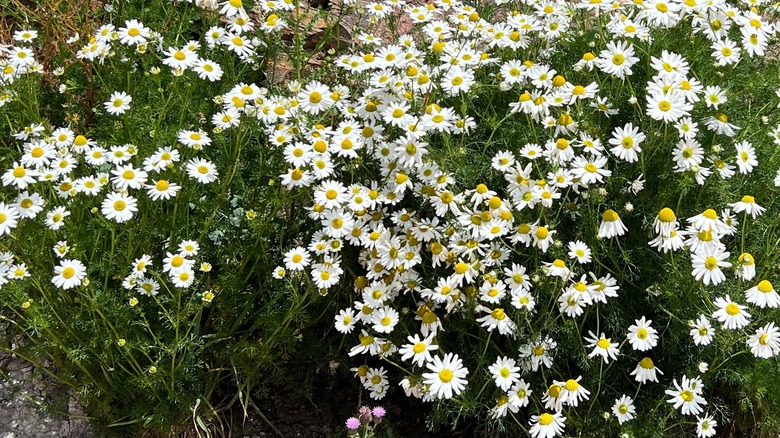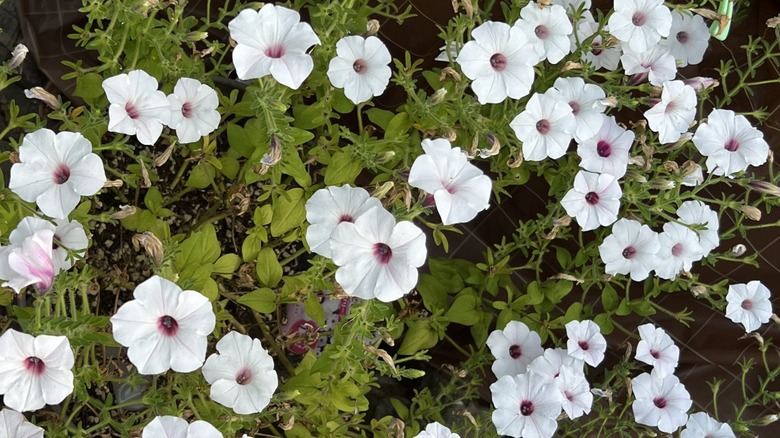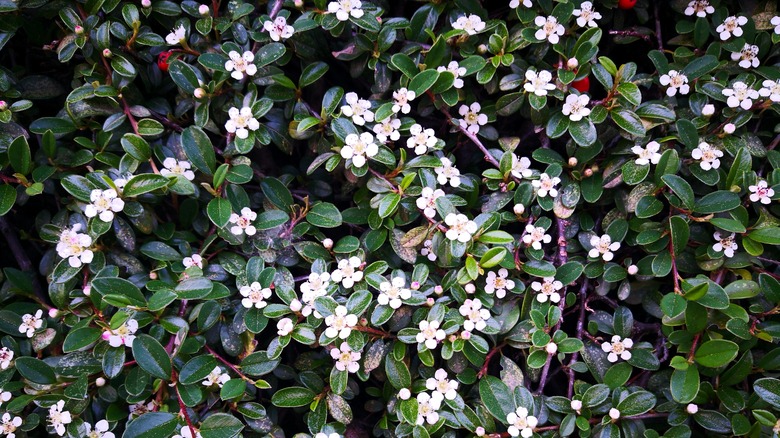9 White Flowering Ground Covers To Add An Elegant Touch To Your Yard
Vibrant white flowers popping against green foliage is an easy way for your yard to gain visual appeal. Pearl-colored blooms can symbolize elegance and thoughtfulness. They even enhance the look of other colorful blossoms. Daisies or daylilies might come to mind when you think of white flowers, but there are many more equally buzzworthy varieties. You can get the same elegant touch with easy-to-grow ground covers. We've got nine white-flowering ground covers perfect for adding subtle texture and style to your outdoor space.
Ground covers can suppress weeds, prevent erosion, decrease runoff, and add curb appeal. They often make a great garden border, replacement for lawn grass, garden bed filler, or just a low-maintenance plant. White-flowering ground covers are especially lovely because of the contrast between the soft-colored petals and the green leaves. Our picks are ideal for beginner gardeners and certified green thumbs alike. Any one of these ground covers could be the elegant touch your yard is missing.
Candytuft
Candytuft (Iberis sempervirens) is an evergreen ground cover with wispy green foliage. Its beautiful white flowers sprout through the spring and summer. They don't just look stunning, but candytuft flowers can lure butterflies and songbirds to your home. Plant the evergreen in full sun for the biggest blooms. This ground cover does best in USDA plant hardiness zones 3 to 8. In colder areas, mulch is recommended to fortify candytuft during the winter. It prefers well-drained, most soil and is tolerant of salt and drought.
Bunchberry
Bunchberry (Cornus canadensis) is a deciduous ground cover that thrives in USDA zones 2 to 6. Its green summer leaves turn reddish-purple during the fall. Vibrant, edible red berries also make an appearance in late summer, while the white flowers emerge in late spring. Its four white bracts are often mistaken for petals, but they're actually leaves. The real flowers are a tiny cluster of blooms within the bracts. Its nectar can bring pollinators, and the berries attract small mammals (though it's a plant that's resistant to deer). Bunchberry favors moist, well-drained soil and partial shade.
White stonecrop
White, star-like flowers are what you get with white stonecrop (Sedum album). The butterfly-attracting blooms blanket the succulent leaves from June to August. During the fall and winter, the leaves turn reddish-brown, adding more color to your yard. White stonecrop prefers full sun to partial shade and dry, well-drained soil. It is drought- and heat-tolerant once mature, and grows best in USDA zones 3 to 9. Keep in mind, this ground cover is intolerant of foot traffic, so you don't want to plant it anywhere it can be trampled.
Sweet woodruff
Sweet woodruff (Galium odoratum) is a low-maintenance, weed-resistant ground cover with white, starry flowers. The flowers and foliage have a sugary scent, hence its name. For the best blooms, plant the ground cover in well-drained soil with partial to full shade. Too much moisture or sunlight can inhibit the full, vibrant look of the flowers. However, during dry seasons, you'll need to water the plant thoroughly to avoid it going dormant. Sweet woodruff is hardy in USDA zones 4 to 8. Although it's not invasive, it is an aggressive grower and can climb over nearby plants, so it's best to give this sweet plant room to grow.
Snow-in-summer
Frosty weather during the summertime sounds alarming, but snow-in-summer (Cerastium tomentosum) is a beautiful ground cover you'll want around. The dense, silvery-green foliage is peppered with white flowers that bloom in the late spring. The blossoms may even bring bees to your garden. Snow-in-summer is non-invasive, but it is aggressive, so you don't want to plant it near delicate plants. The ground cover still thrives in poor, dry soil, but won't survive poorly-drained soil or harsh heat. Partial shade to full sun is ideal. Snow-in-summer is hardy in USDA plant zones 3 to 7.
White wood aster
White wood aster's (Eurybia divaricata) heart-shaped leaves and spiky white petals are a stylish touch to border trees and edge gardens. The white flowers bloom in August and has blooms that attract butterflies and bees. The yellow centers turn red after pollination, adding a subtle pop of color to your garden. White wood aster is a ground cover plant that loves shade and is drought-tolerant. It's a low-maintenance crop that grows best in USDA hardiness zones 3 to 8. Part to full shade and moist, well-drained soil is ideal. Once established, these plants can grow rapidly, so prepare a large space accordingly.
Roman chamomile
Roman chamomile (Chamaemelum nobile) is a low-growing perennial. The striking white flowers with yellow centers are commonly used for tea, but they're also great for beautifying your yard. While we can enjoy the pretty summer-to-fall blooms, they can be toxic to dogs, cats, and horses. Roman chamomile prefers full sun to partial shade with moist, well-drained, sandy soil. It is hardy in USDA zones 4 to 9. You can mow Roman chamomile like a lawn, making it a great ground cover plant to grow instead of grass.
Wild sweet potato
Wild sweet potato (Ipomoea pandurata) has large white flowers with purple centers that bloom from May to September. The blossoms attract hummingbirds, butterflies, songbirds, and other pollinators. However, it can be toxic to cats, dogs, and horses. While wild sweet potato can be planted as a ground cover, its climbing vines also make it suitable for privacy fences. The perennial prefers moist, well-drained soil and full to partial sun. Wild sweet potato is also drought-tolerant once established, and grows best in USDA zones 3 to 8.
Bearberry cotoneaster
Do you want a low-maintenance evergreen ground cover with cute, tiny white flowers and glossy leaves? Then, bearberry cotoneaster (Cotoneaster dammeri) is the answer. This ground cover is hardy in USDA zones 5 to 8 and thrives in partial to full sun with moist, well-drained soil. Its dark green foliage gains a purple tint for the fall and winter. The white blooms sprout in the spring, attracting pollinators. Bearberry cotoneaster's berries may also lure birds and small animals to feast. You get decorative leaves, flowers, and friendly wildlife all from one easy-to-grow ground cover.
